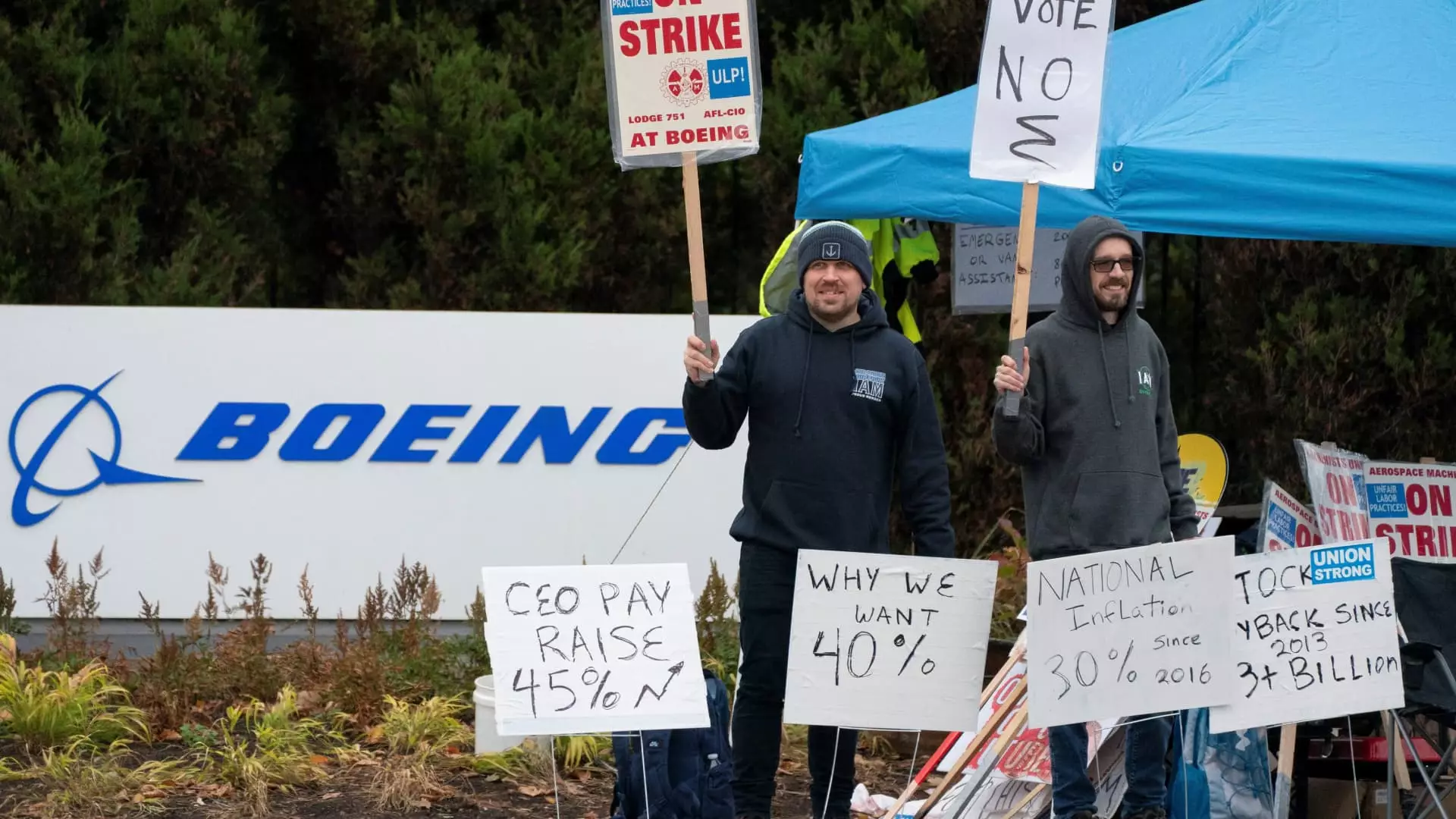In a noteworthy development that has unfolded over the last seven weeks, Boeing has found itself in a precarious situation due to a strike involving its machinists’ union. The International Association of Machinists and Aerospace Workers District 751, representing over 32,000 machinists predominantly located in the Seattle area, initiated the walkout on September 13 after rejecting a tentative agreement. This strike has not only disrupted Boeing’s operations but also called into question the company’s capacity to remain competitive in an increasingly demanding market. The implications of the strike are multifaceted, encompassing financial repercussions for both workers and the company, as well as broader economic consequences.
As Boeing grapples with mounting losses—reporting over $6 billion in the last quarter alone—getting workers back on the production line has become increasingly urgent. The new contract proposal, featuring a 38% wage increase over four years and significant bonuses, aims to address the dire situation. However, the union’s leadership is acutely aware that there is a critical point in labor negotiations where further strikes could yield diminished returns for workers. The union’s communication emphasizes that prolonging the strike may jeopardize their chances of achieving better terms in the future.
The proposed contract is not merely a figure on a spreadsheet; it represents years of hardship and negotiation for the workers involved. Though the new offer represents a step forward—a substantive increase from the previous offer of 35% to 38%—the broader context is essential. The previous rejections of contract proposals signal not just a disagreement over wage figures but a deeper dissatisfaction with how Boeing has handled labor relationships and compensation in the wake of rising living costs in the Seattle region.
Moreover, the dual options of bonuses—either a lump sum of $12,000 or an alternative package of $7,000 plus a $5,000 401(k) contribution—highlight a trend towards flexibility in contracts. This attempt by Boeing to appeal to the various financial needs of its workers showcases an evolving understanding of modern labor demands. However, the underlying issue persists: as the tech industry flourishes in the area, Boeing’s compensation packages must remain competitive to retain talent and stabilize its workforce.
Boeing’s struggles are compounded by its corporate image and the broader implications of quality and safety that have come to define its public persona. The company has faced lensing scrutiny due to past safety issues, particularly following high-profile incidents involving the 737 Max. These safety lapses and production flaws have eroded public trust and investor confidence, making it crucial for Boeing to stabilize operations and prioritize employee satisfaction simultaneously.
Moreover, the involvement of the Biden administration in the negotiations indicates the strike’s national importance. Acting Labor Secretary Julie Su’s meetings with both Boeing’s executives and union representatives demonstrate a recognition that labor relations in a key industry like aerospace impact the overall economy. President Biden’s statements reflecting support for strong union contracts showcase the administration’s commitment to advocating for workers’ rights. However, the effectiveness of this support will depend on the successful outcomes of negotiations that ultimately place workers back into production.
The looming question remains: can Boeing effectively bridge the gap between its workers’ demands for fair compensation and the company’s need to recover financially? The potential return of machinists to the assembly line will undoubtedly assist in stabilizing Boeing’s operations and restoring its status as a top U.S. exporter.
However, this negotiation process reflects a larger narrative about labor relations in the United States, particularly in light of rising costs of living in tech-heavy areas. Workers are increasingly aware of their bargaining power, and the outcome of this strike may set a precedent for other industries. It is incumbent upon Boeing, now more than ever, to recognize that their workforce is not merely a cog in the wheel, but rather a vital force that drives their innovation, safety, and reputation in both domestic and international markets.
As Boeing navigates these turbulent waters, a dual commitment to employee welfare and corporate responsibility will be paramount in ensuring its future success. The outcomes of these negotiations will undoubtedly shape the company’s trajectory for years to come, while also impacting workers’ lives and the regional economy.

